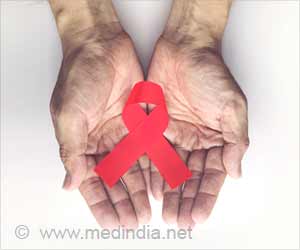The strain of HIV that touched off the US AIDS epidemic and fueled the global scourge of the disease came to the continent from Africa via Haiti, according to a study released Monday.
The strain of HIV that touched off the US AIDS epidemic and fueled the global scourge of the disease came to the continent from Africa via Haiti, according to a study released Monday.
"Haiti was the stepping stone the virus took when it left central Africa and started its sweep around the world," said Michael Worobey, an assistant professor of evolutionary biology at the University of Arizona in Tucson, and senior author of the paper.The deadly virus probably arrived on US shores in about 1969, more than a decade before the full-blown US AIDS crisis of the 1980s, and may have been carried there by a single Haitian immigrant, according to the study.
"Once the virus got to the US, then it just moved explosively around the world," Worobey said.
The finding confirms longstanding suspicions among some scientists that the pathogen was imported from Haiti -- the poorest nation in the western hemisphere, with a long history of migration to the United States.
The timing suggests that it was more likely to have been a Haitian immigrant or immigrants rather than US sex tourists returning from Haiti, since it did not become a destination for them until the 1970s, Worobey said.
The research also pegs the beginning of the US AIDS epidemic to the late 1960s rather than the mid 1970s as was previously assumed, and shows that the disaster was brewing for a full 12 years before US public health authorities realized they had an epidemic on their hands.
Advertisement
The strain of the virus that touched off the US epidemic subsequently spread to Canada, Europe, Australia, and Japan.
Advertisement
To solve the riddle, Worobey and a team of international researchers conducted genetic analyses of archived blood samples from early AIDS patients who migrated from Haiti to the United States.
They used these analyses to make genetic family trees for the virus, which they then compared to the genetic sequences of AIDS patients from other countries.
Their calculations suggested there was a greater than 99 percent probability that the virus went from Africa to Haiti to the United States.
The research ties in with other facts that pointed to Haiti as the missing link in the chain of transmission.
Firstly, many Haitian professionals worked for a time in the Democratic Republic of Congo after it achieved independence from Belgium in 1960. It is one of several central African nations where the disease has been established since the 1930s.
In the early days of the US outbreak, the rate of AIDS infections among Haitians living in the United States was 27 times higher than that in the broader US population.
Worobey and his colleagues also concluded that the virus jumped from Haiti to Trinidad and Tobago, causing the predominantly heterosexual outbreak on those Caribbean islands.
The AIDS problems on Haiti and Trinidad and Tobago were therefore not started by North American sex tourists visiting the islands in the 1970s or 1980s, as some scientists had speculated.
Source-AFP
SRM/M











